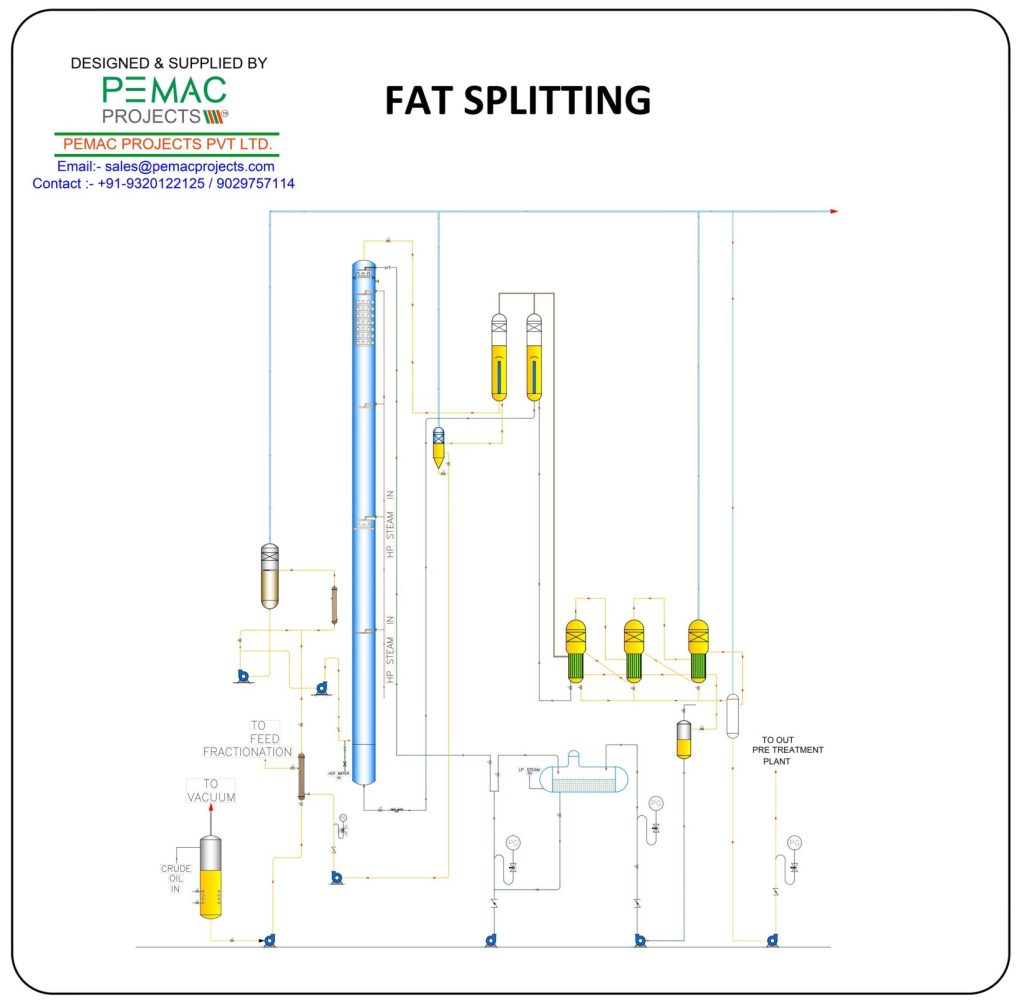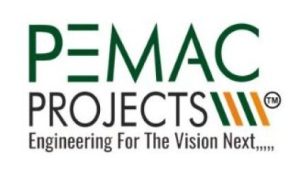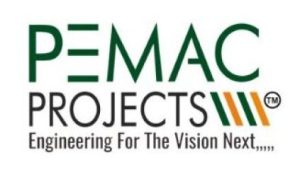- 7045341212
- 8591308170
- sales@pemacprojects.com
- Navi Mumbai, Maharashtra, India
- 7045341212
- 8591308170
- sales@pemacprojects.com
- Navi Mumbai, Maharashtra, India


PROCESS DESCRIPTION
Hydrolysis process occurs at temperature of 245~255 degree C & pressure between 55~60 bar.
a) De-aeration
Crude oil is heated and deaerated under vacuum to remove un-dissolved gasses before ??entering subsequent high temperature splitting section.
b) Splitting
in the splitter, fatty acids are produced by counter-current splitting of oil with steam under temperature up to 260ºC and pressure up to 6 bar.
c) Fatty acid drying
the fatty acid form splitter is flashed and dried to remove the residual moisture. The crude fatty acids are relatively dark in color and contain impurities. The fatty acids are subsequently purified to separated into fractions through distillation or fractionation.
d) Glycerin-water pre-concentration
crude glycerin is discharged from the bottom of splitter continuously. Crude glycerin water is first flashed before entering the evaporation stage. Concentration of crude glycerin obtained after the multiple effect evaporators is about 25%~35%.
Water flashed from crude glycerin is used for heat recovery in the multi-stage evaporators before pumped back to the splitter for reuse.


To Produce High Purity Fatty Acid Fractions Process Description:
Fatty acid fractionation plant is designed to separate the fatty acid fractions or individual components based on boiling plant profile (relative volatility between fractions).
- a) De-aeration
Crude fatty acid is first heated and deaerated under vacuum to remove undissolved gasses before entering subsequent high temperature fractionation section. This is to avoid undesired oxidative reaction that will affect the product quality.
- b) Fractionation (2-column system) fatty
Fatty acid is fed to column 1, where it is evaporated with falling-film type evaporated (can be designed for heating medium of heat transfer oil or high-pressure steam).
Fraction 1 is condensed in a final condenser and the liquid is withdrawn from the column top. Bottom fraction of column 1 is fed into column 2, where it is evaporated with falling film evaporators at higher temperature.
Fraction 2 is condensed by a surface condenser (which is designed for heat recovery by steam generation), followed by a final condenser.
Fraction 3 (bottom fraction of column 2), can be sent to a distillation section for removal from residue

